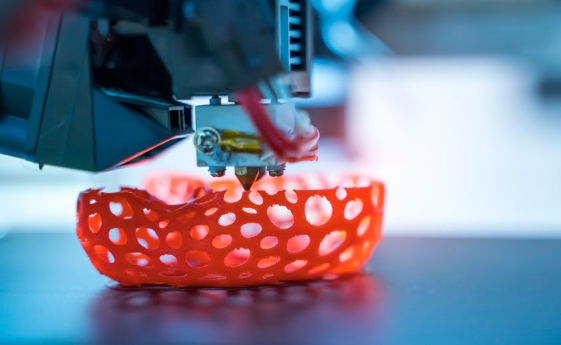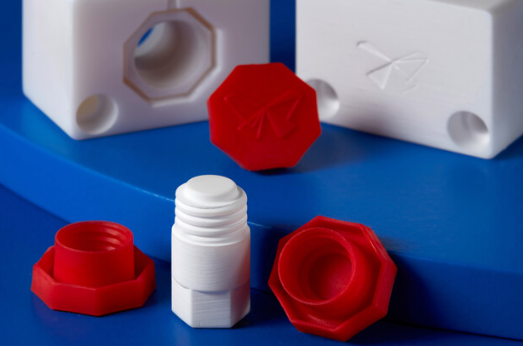3D printing won’t replace injection molding; both have unique strengths, suiting different applications in modern manufacturing.

History and Evolution
Tracing the Development of 3D Printing and Injection Molding Technologies
3D Printing: A Journey from Concept to Mainstream
- Early Beginnings: The concept of 3D printing emerged in the 1980s. During the late 1980s and 1990s, it allowed for quick and cost-effective creation of product prototypes.
- Technological Advancements: The 2000s saw significant advancements in 3D printing technology, including the development of new printing methods like Fused Deposition Modeling (FDM) and Selective Laser Sintering (SLS).
- Material Expansion: From the early use of photopolymers and thermoplastics, the range of 3D printing materials has vastly expanded to include metals, ceramics, and even bio-materials.
- Accessibility and Popularity: The expiration of key patents in the early 2010s led to a surge in popularity and accessibility, making 3D printers more affordable for consumers and small businesses.
Injection Molding: From Industrial Revolution to Modern Day
- Origins in the 19th Century: Injection molding has its roots in the late 19th century, with the first injection molding machine patented by John Wesley Hyatt in 1872.
- Post-War Expansion: The post-World War II era witnessed a boom in plastic production, propelling injection molding to the forefront of mass manufacturing.
- Technological Innovations: Over the decades, significant advancements were made in machine precision, speed, and control, enhancing the efficiency and quality of injection molding.
- Material Diversification: Initially limited to basic plastics, injection molding technology now accommodates a wide range of materials, including high-performance polymers and composites.
- Sustainability Focus: Recent years have seen a focus on reducing waste and energy consumption in injection molding processes, aligning with global sustainability goals.
Comparative Analysis: 3D Printing vs. Injection Molding
- Cost: Injection molding typically has higher upfront costs due to tooling but is more cost-effective for large-scale production. In contrast, 3D printing has lower initial costs, making it ideal for small-scale or custom production.
- Efficiency and Speed: Injection molding is faster for mass production, whereas 3D printing offers greater efficiency for rapid prototyping and small batches.
- Material and Quality: Injection molding supports a wide range of materials and offers high-quality, uniform products. 3D printing is catching up in terms of material variety and quality but still faces limitations in surface finish and structural integrity.
- Design Flexibility: 3D printing excels in design flexibility, allowing complex geometries and customization that are challenging or impossible with injection molding.
- Environmental Impact: Both technologies are focusing on reducing their environmental footprint, with advancements in recyclable materials and energy-efficient processes.
Technology Comparison
3D Printing: Methods and Materials
Diverse 3D Printing Techniques
- Stereolithography (SLA): SLA uses a laser to cure liquid resin into hardened plastic in a process known as photopolymerization.
- Fused Deposition Modeling (FDM): FDM works by extruding thermoplastic filaments, layer by layer, to create an object.
- Selective Laser Sintering (SLS): SLS utilizes a laser to sinter powdered material, binding it together to create a solid structure. It is beneficial for complex geometries and does not require support structures.
Materials Used in 3D Printing
- Plastics: Commonly used materials include PLA, ABS, and Nylon, offering a balance between strength and flexibility.
- Metals: Titanium, aluminum, and stainless steel are used for industrial applications, particularly in aerospace and automotive industries.
- Advanced Materials: Recent innovations include conductive materials, biocompatible materials, and photopolymers with unique properties like flexibility or temperature resistance.
Advantages and Limitations
- Customization and Complexity: 3D printing excels in producing complex, bespoke designs, and prototyping.
- Cost and Time: Ideal for small-scale production due to lower upfront costs and material efficiency. However, the speed can be a limiting factor for larger volumes.
- Quality and Strength: While offering design flexibility, 3D printed items may have variable strength and lower surface quality compared to injection molded parts.
Injection Molding: Techniques and Materials
Injection Molding Process
- Machine Components: Consists of a hopper, screw, barrel, and mold cavity. The process involves heating plastic pellets until they melt, then injecting them into a mold cavity.
- Clamping and Injection: The machine applies significant pressure to keep the mold closed during injection. Once the material fills the mold, it cools and solidifies into the final shape.
- Ejection and Finishing: After cooling, the part is ejected from the mold, and any excess material or flash is removed.
Materials for Injection Molding
- Thermoplastics: Common materials include Polyethylene (PE), Polypropylene (PP), and Polycarbonate (PC). These offer durability and are easy to mold.
- Thermosetting Plastics: Materials like Epoxy and Phenolic resins, which harden permanently after heating, are also used.
- Specialty Materials: Some applications use high-performance plastics like PEEK for their superior heat resistance and mechanical properties.
Efficiency and Cost Considerations
- High-Volume Production: Injection molding is highly efficient for large-scale production, with shorter cycle times per part.
- Tooling Cost and Lead Time: The initial investment in mold design and manufacturing can be significant, making it less viable for small runs.
- Consistent Quality: Produces high-strength, uniform parts with excellent surface finish but offers less flexibility in design changes once the mold is made.
Cost Analysis
Evaluating the Economic Aspects of 3D Printing and Injection Molding
Understanding the Cost Structure of 3D Printing
- Initial Investment: The cost of 3D printers varies widely, ranging from a few hundred dollars for basic models to tens of thousands for industrial-grade machines.
- Material Costs: The price of 3D printing materials can be significant, especially for specialized materials like metals or advanced polymers.
- Operating Costs: Includes electricity usage, which can vary based on the printer model and the complexity of the printed parts. For instance, an FDM printer might consume about 50 watts per hour, while an industrial SLS machine might use several kilowatts.
- Maintenance and Upkeep: Regular maintenance is required to ensure optimal functioning, which can add to the overall cost, especially for high-end printers.
Cost Dynamics in Injection Molding
- Tooling Investment: The initial cost of creating molds is high, often ranging from a few thousand to hundreds of thousands of dollars, depending on the complexity and precision of the mold.
- Material Costs: Injection molding materials generally cost less per unit than 3D printing materials, especially at high volumes.
- Energy Consumption: Injection molding machines consume a significant amount of energy, typically measured in kilowatts. For example, a mid-sized machine might use about 15-20 kilowatts.
- Labor and Overhead: Automation reduces labor costs in injection molding, but the process still requires skilled operators and maintenance, contributing to the overall cost.
Waste Generation in Injection Molding
- Runners and Gates: These are the channels through which the molten plastic travels to reach the mold cavity. Once the part cools and solidifies, this excess material becomes waste.
- Overmolding and Flash: Excess material that leaks out of the mold cavity, known as flash, requires trimming and leads to material wastage.
- Defective Parts: Quality control issues can lead to the production of defective parts that need to be discarded.
- Recycling and Reuse: While some waste material can be recycled, the process adds additional steps and costs to the production cycle.

Quality and Precision
Assessing the Accuracy and Finish of Products
3D Printing: Achieving Detailed and Customized Outputs
- Precision Levels: The accuracy of 3D printed parts depends on the printer technology. For example, SLA printers can achieve layer resolutions as fine as 25 microns, resulting in high-detail finishes.
- Surface Finish: 3D printing often leaves a layer-line texture, which might require post-processing like sanding or chemical smoothing for a polished look.
- Material Impact on Quality: The choice of material greatly affects the quality. Materials like ABS and PLA are popular for their ease of printing, but advanced materials like resins or metal powders can offer superior finishes and strength.
- Design Flexibility vs. Precision: While 3D printing excels in customization and complex geometries, achieving precision in overhangs and bridging areas can be challenging, often requiring support structures.
Injection Molding: Consistency and High Volume Accuracy
- Repeatability and Uniformity: Injection molding excels in producing uniform parts in large quantities. The precision of the final product is highly dependent on the mold quality.
- Surface Finish: Injection molded parts generally have an excellent surface finish directly out of the mold, requiring little to no post-processing.
- Limitations in Design Complexity: Unlike 3D printing, injection molding can be restrictive in producing complex geometries and may require additional tooling or assembly.
Comparative Analysis: Balancing Precision with Requirements
- 3D Printing for Prototypes and Complex Parts: Ideal for prototypes and complex, low-volume parts where customization and intricate designs are required.
- Injection Molding for Mass Production: Suited for high-volume production where uniformity, strength, and a smooth finish are critical.
- Cost vs. Quality Trade-offs: 3D printing can be more cost-effective for small runs despite potential compromises in finish, while injection molding requires a higher initial investment but delivers consistency and quality at scale.
Application Areas
Industrial and Consumer Applications of 3D Printing and Injection Molding
3D Printing: Versatility Across Various Domains
- Prototyping and Design: 3D printing excels in prototyping, offering designers and engineers the ability to rapidly iterate designs. It’s particularly useful in automotive, aerospace, and consumer electronics for creating complex, lightweight parts.
- Customization in Healthcare: In medical fields, 3D printing finds use in creating custom prosthetics, dental implants, and even in bioprinting for tissue engineering.
- Manufacturing of Complex Parts: Industries like aerospace benefit from 3D printing for manufacturing parts that would be impossible or too costly to produce with traditional methods. This includes components with intricate internal structures or those made from high-performance materials.
Injection Molding: Foundation of Mass Manufacturing
- Consumer Goods: A mainstay in the production of consumer products such as plastic containers, toys, household appliances, and automotive components.
- Medical Devices: Injection molding is critical in the medical industry for producing high-volume, disposable items like syringes, vials, and surgical instruments with precision and sterility.
- Electronics and Enclosures: The process is ideal for creating durable and uniform enclosures for electronic devices, ensuring consistent quality and protection for internal components.
- Automotive and Aerospace Components: Used for producing large volumes of consistent parts like dashboards, bumpers, and fluid reservoirs in automotive manufacturing, as well as certain non-critical aerospace components.
Comparative Analysis: Tailoring to Needs
- 3D Printing for Customization and Complexity: Best suited for applications requiring customization, complex geometries, or where traditional manufacturing is not feasible or too expensive.
- Injection Molding for Uniformity and Scale: Ideal for applications that demand high-volume production of uniform parts, particularly where cost per unit needs to be minimized.
- Material Considerations: The choice of material in both technologies plays a crucial role in determining their application. While 3D printing offers a wide range of materials, including specialized and composite materials, injection molding benefits from a broader selection of high-volume, cost-effective materials.




